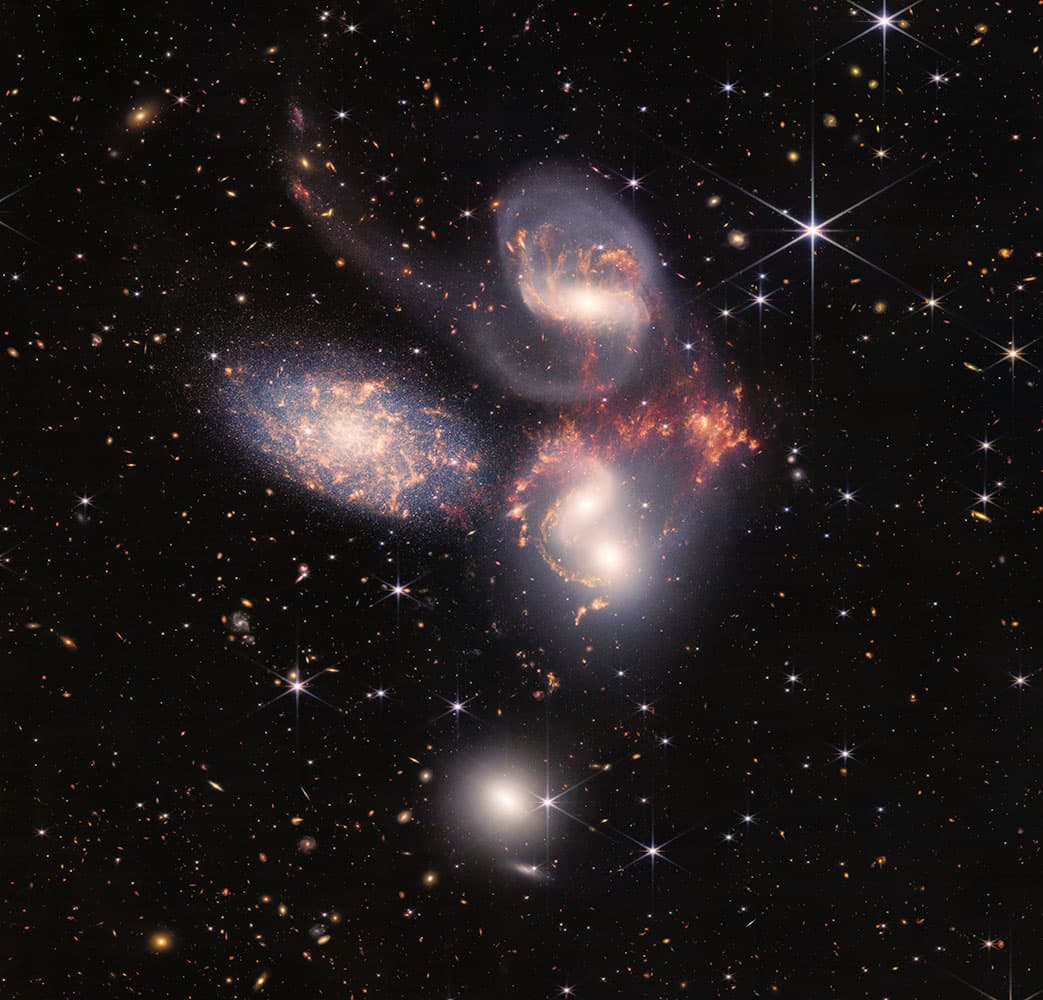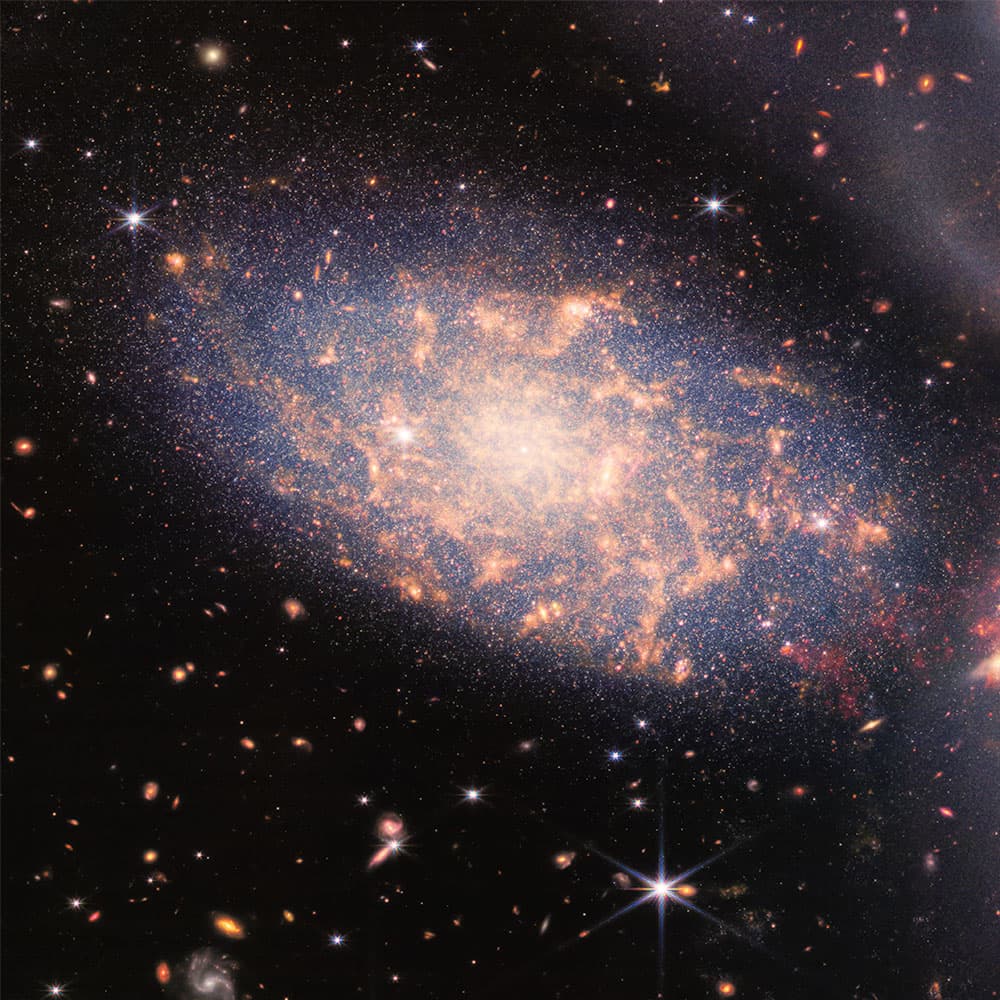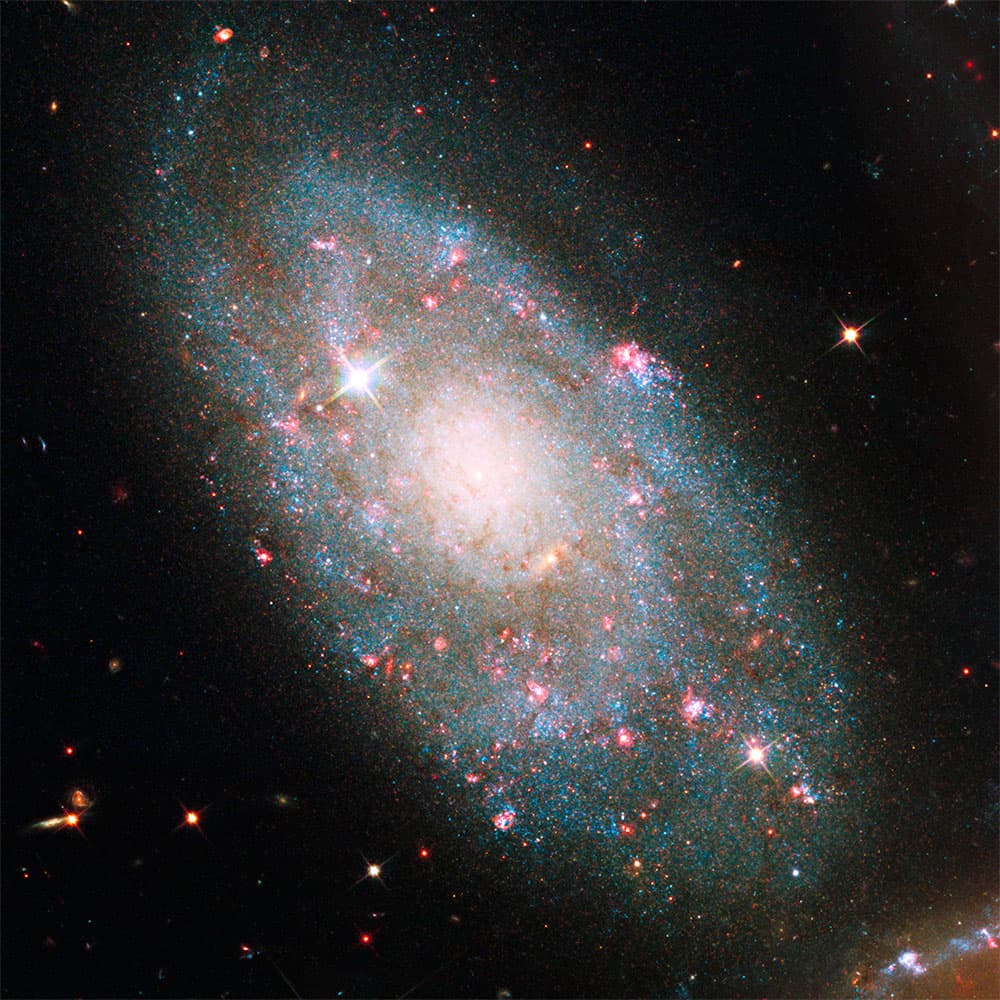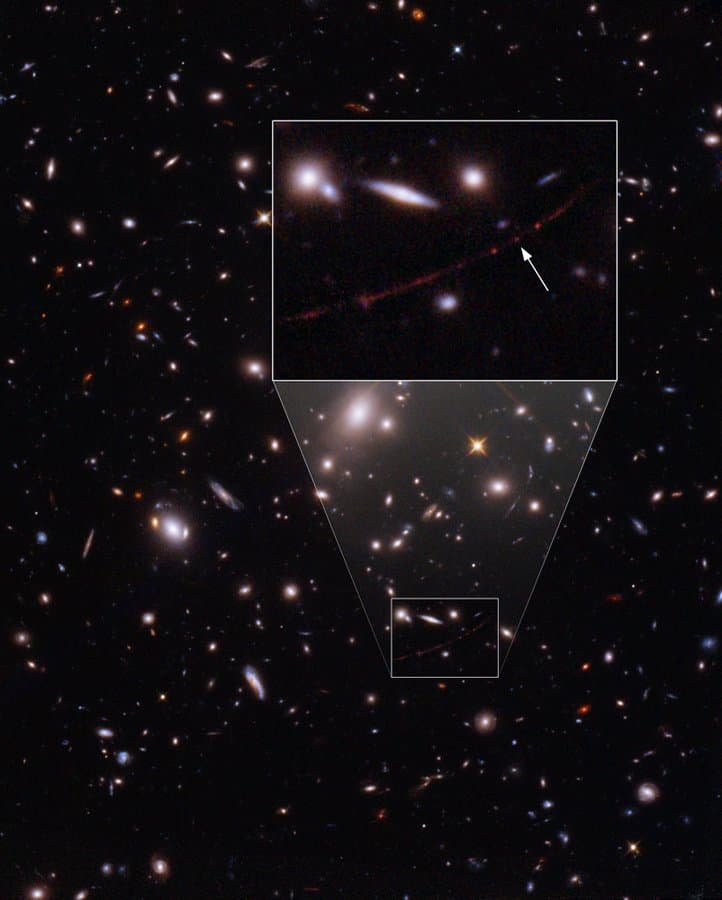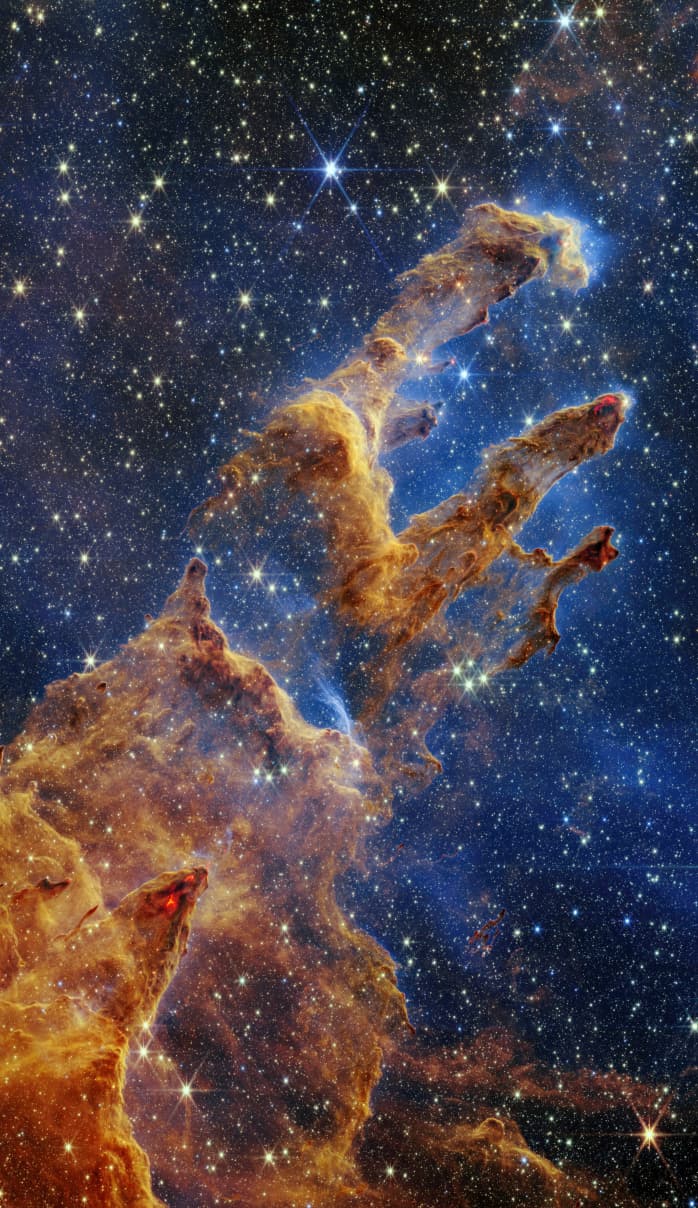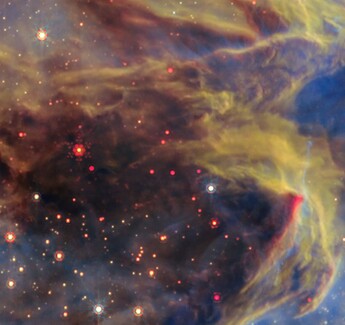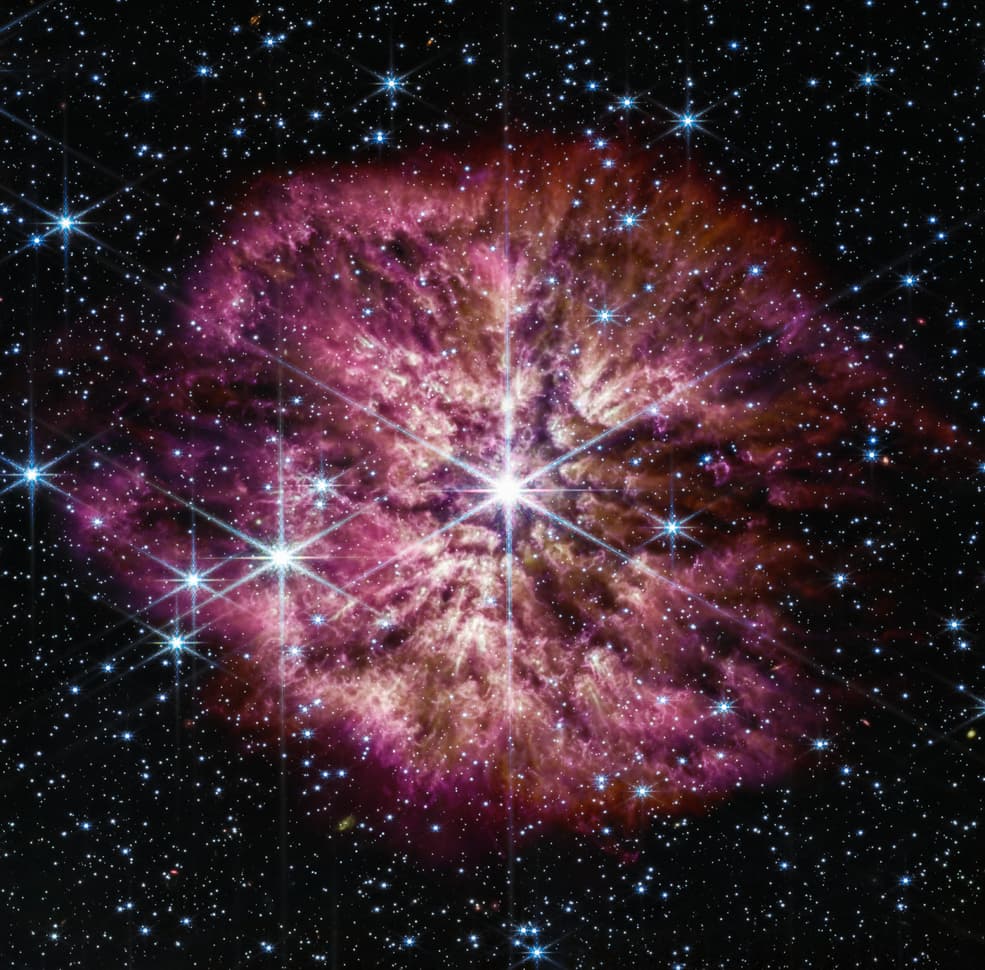I’m curious, but also frightened, at what the flat earthers have to say about all this.
They are very much entitled to their theories. There’s mountains of evidence and scientific proof Earth is round and not flat.
But if someone wants to theories and prove that therom then that’s great, science welcomes it.
Just as much as it’s theorized that the universe sits a turtles back and it’s turtles all the way down for infinity. A valid theory until proven or disproven.
This is the oldest galaxy ever seen. It was spotted with early-release and is sufficiently red-shifted to have formed only 300 million years after the Big Bang which means it’s 97.8% the age of the Universe.
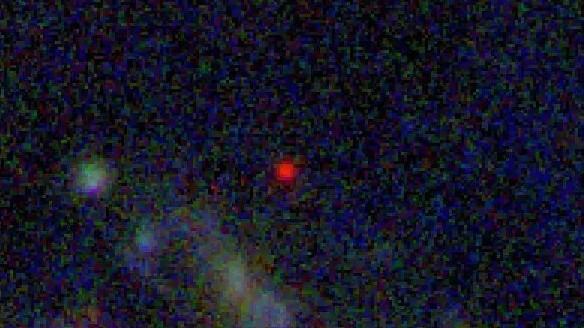
Taken from Twitter
The Hubble telescope discovered Earendel earlier this year; JWST will be able to study it in much more detail. The only reason we can see this ultra-distant star is because of a gravitational lens – the magnifying effect of distorted space-time.
The
space telescope just took its first look at Earendel, the most distant and ancient star known – so far. Its light has taken 12.9 billion years to reach us. HT
for posting the images, part of JWST observing program 2282.
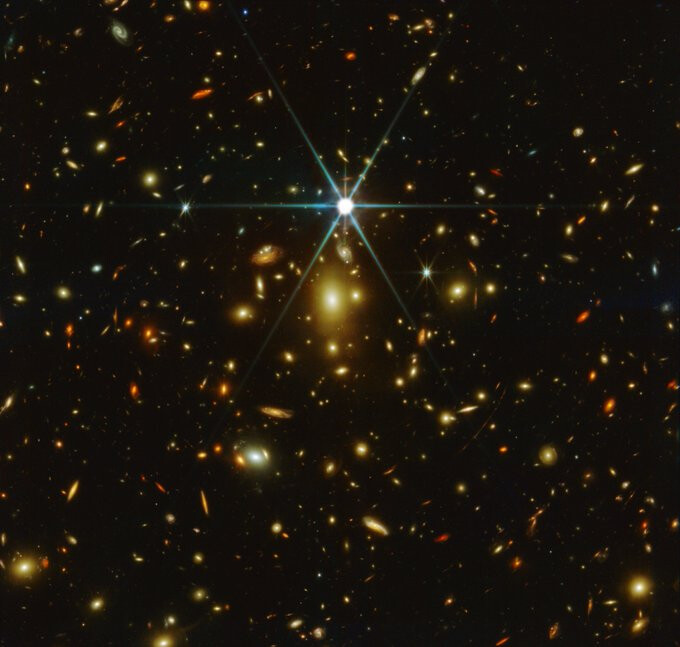
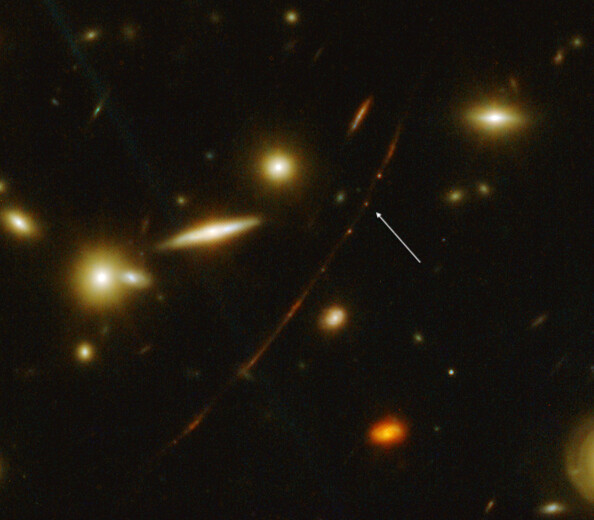
Here’s a link to the most stunning James Webb Telescope image I’ve seen yet. It’s a huge 8423 x 14,589-pixel TIFF image weighing in at 163 MB, so don’t bother on your phone.
Download — https://stsci-opo.org/STScI-01GFNMTN2NJ7E0D0G39WX26N1S.tif
If you download it, open the image in Photoshop and enlarge it to 100%. Use the scroll bars to move around to the darkest areas in the nebulae. The tiny red dots are new stars still deep inside the womb of the nebula. Here’s a small detail section of the full image, which is much larger.
Images of the nebula were also shot by the Hubble Telescope several years ago and were widely called “The Pillars of Creation.” These pillars are a small section of the much larger Eagle Nebula known as M16 (which I can see through my home 12-inch Meade reflector as a small fuzzy white patch in the night sky).
The new JWSP image has far more detail than the Hubble images. The infrared wavelengths captured by the JWSP enable us to see inside the nebula to the new stars. Our own star, The Sun, was likely formed in a nebula similar to this some 4 billion years ago.
Here’s a link with additional information:
This is one is about 291 lightyears away.
Interestingly, if we could travel the speed of light, it would take us 291 years to get there, and 291 back.
But over 4000 years would pass on Earth!
The Universe is crazy.
I miscalculated - it would 1167 years would pass on Earth… still
It’s so mindending right? I’ve always been blown away by the atomic clock time dilation experiment where they flew around earth, when time is something that seems so objective, like measurements on a ruler.
I know - crazy right.
So if you traveled the speed of light to Mira and back (well 99%) 1167 years passes on Earth.
If you travel at 50% speed of light only 900ish years pass on Earth - even though you’re traveling slower.
That’s cos time moves slower the faster you approach the speed of light.
mind bottling.
… and mass increases, which, of course, means that the closer you get to the speed of light, the more your mass would increase, so you’d slow down. Add more energy to speed up again and your mass increases again, slowing you down again. Rinse and repeat. I find it all fascinating stuff.
Caveat – that is as I have always understood it anyway. Just-B, I know, you know what are talking about when it comes to physics, so if that explanation was particularly poor, over-simplistic, kitchen-table physics, I apologise in advance.
I always understood this as more like, as you approach the speed of light your mass increases, thus requiring ever more energy/thrust to continue approaching the speed of light - on something like a logarithmic scale. At some point it becomes necessary to have infinite energy / thrust to achieve the speed of light, not to mention surpass it.
Of course, that depends on whether you’re the traveler or the observer here on Earth. At the speed of light during the entire journey, the trip there and back (if it were possible) would be instantaneous for the traveler. However, from the observer’s viewpoint, the traveler would be away for around 582 years. I’m not sure how you’re getting the 4,000 and 1,167 years figures.
Increasing mass wouldn’t cause the object to slow down. Inertia would keep it at whatever velocity the mass attained (the law of conservation of energy). The problem with mass reaching the speed of light is that the increasing mass requires more energy to propel it even faster.
The faster an object moves, the greater the mass becomes and the amount of energy required to propel it to greater velocities increases. At the speed of light, the mass of the object would become infinite and the amount of energy required to accelerate the object to that speed would be infinite, which is theoretically impossible.
It may shock you. But I am doing the math myself and probably getting it wrong.
If you leave now at 99 percent of speed of light it takes approx 420 years to get there and back.
That’s at least 849 years round trip.
As you are approaching speed of light it slows down.
So using time dilation formula which I probably got wrong I came up with that number.
But I’ve confused the feck out of myself now.
Do you know how to work it out?
I was using time dilation formula. But who knows if that is right?
From the observer’s viewpoint, a traveler moving at the speed of light would take X time to travel from point A to point B. However, (and here’s the critical part), time slows to a crawl as the speed of light is approached. Time stops at the speed of light, so from the traveler’s viewpoint, no time would have elapsed during the journey.
In other words, traveling to the Wolf-Rayet object from Earth that you referenced (which, according to the story, is ~15,000 light years away) would require ~30,000 years to travel there and back at light speed as measured from an observer’s time reference here on Earth. From the traveler’s viewpoint, since time would have stopped, that traveler would have experienced no time-lapse and would arrive back on Earth the instant he departed. However, he would find that 30,000 years had elapsed here on Earth during the moment he was gone.
Judging from the second article you referenced, the calculations there are based on moving at 99% of the speed of light, in which case some time would have passed relative to the observer here on Earth.
Yes - basing it on 99% speed as 100% is impossible.
And so is 99% probably.
I know where I got the 500 from - I was reading another article on Mira and got the articles mixed up.
Silly.
I was then fixated on working out from that distance.
Basically I won’t get a job at Nasa anytime soon…
Do you remember when NASA’s $125 million Mars Climate Orbiter crashed on Mars because the engineers forgot to convert some of the manufacturer’s British imperial measurements into metric?
Ha no I don’t recall that one ![]()
